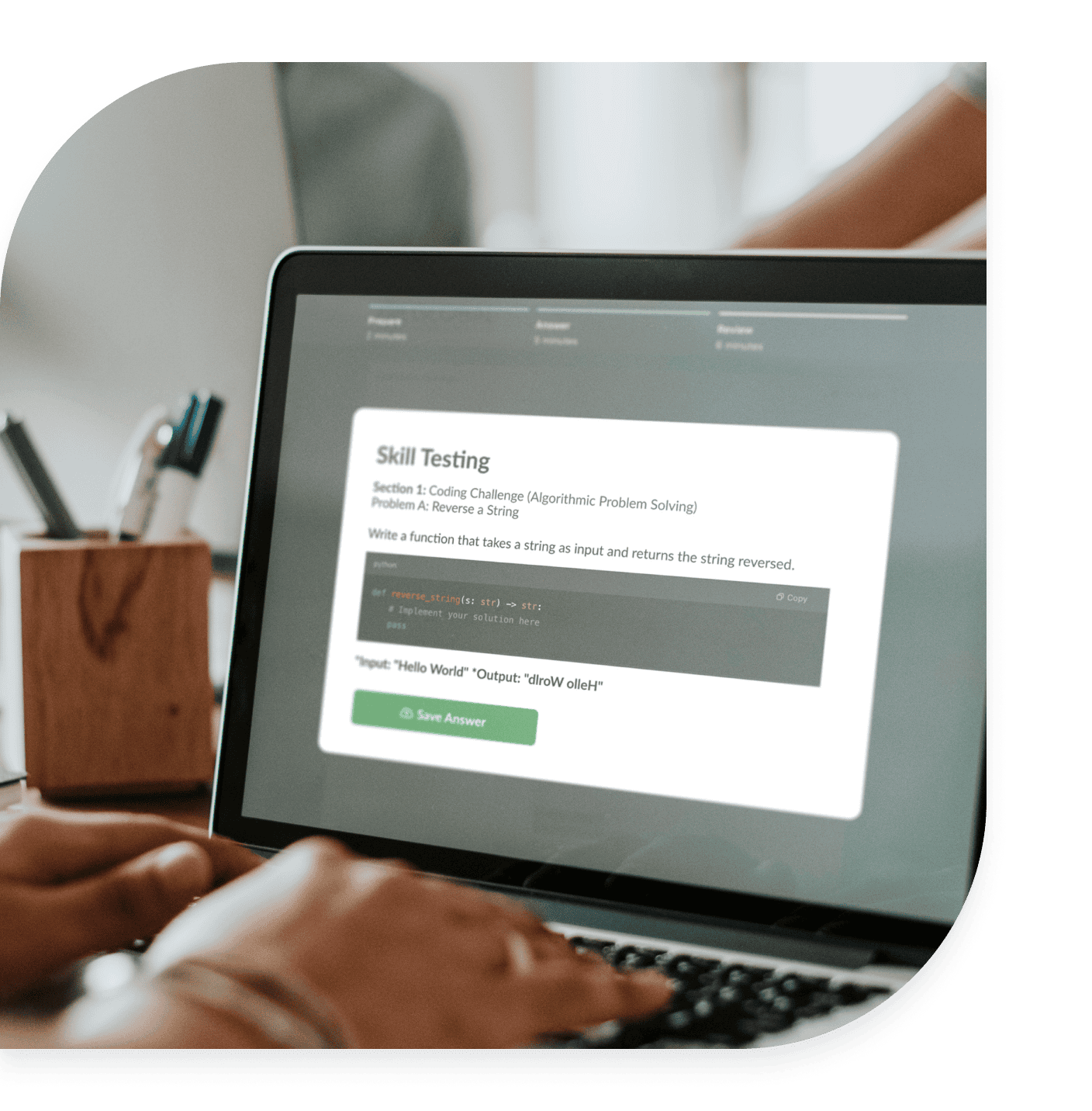
Hiring Bias
Learn about hiring biases, their negative effects, and practical ways to overcome them.

Candidates can now learn almost any skill on their own time via e-books, online modules, and virtual lectures. What does this mean for talent acquisition? With reskilling and upskilling giving applicants more ways to prove their know-how and expertise, skills-based hiring is a shift HR teams can welcome with open arms.
And so, we’re seeing the rise of new collar jobs. These careers typically prioritize hands-on experience from on-the-job training, such as coding bootcamps or machinery apprenticeships. Rather than a traditional four-year college degree and hundreds of hours sitting in lectures and writing assignments, these jobs may become the norm with the rise of AI.

“Empathy is key when utilizing skills-based hiring. Companies should create a transparent, low-pressure environment that empowers candidates to showcase their abilities without undue stress.”
Nginda Nganga
Co-founder at ToffeeTribeOver 17 million Gen Z employees entered the workforce in 2023, and they were projected to exceed Baby Boomers' numbers before 2025. Leading organizations are leveraging AI-driven tools, skills assessments, and data insights to identify top talent based on competencies rather than resumes alone—championing workforce diversity, agility, and innovation.
Some organizations have already hopped on the trend of skills-based hiring. IBM, for example, faced a talent shortage, particularly in tech-related fields and wanted to create a more inclusive and equitable hiring process. Assessment scientists even propose that prioritizing skills in candidates is most predictive of job success!
So, what did they introduce? The HR team launched their “New Collar Jobs” initiative, which prioritizes skills over formal degrees for positions like cybersecurity analysts and cloud computing specialists. In addition, they also introduced the Apprenticeship Program, which helps candidates pivot into technology, wherever they are in their career journey.

LinkedIn, the world’s largest professional networking platform, noticed that traditional hiring practices were leaving out talented individuals who had relevant skills but lacked formal education. To tackle this, they built SBH tools into its platform, helping recruiters focus on skills over credentials.
Skills assessments
LinkedIn offers short, standardized tests that candidates can take to demonstrate proficiency in specific skills, such as programming languages, software tools, or business-related activities.
Job post skills matching
When employers create a job posting, LinkedIn automatically suggests key skills relevant to the role.
Skills graph and market insights
The dynamic graph maps top skills across industries, job roles, and geographies. Organizations can better forecast skill shortages and plan training or recruitment efforts in advance.
Accenture, a global leader in digital strategy, faced a skills gap in emerging technologies and wanted to recruit a diverse workforce. The organization overhauled its hiring approach to zoom in on applied skills rather than degrees.
Technology Quotient (TQ) Program
Encourages employees to continuously develop technological expertise in AI, blockchain, cloud computing, and cybersecurity.
“Learn-to-Earn” Model
Helps employees gain industry-recognized certifications while working.
From soft skills to transferable skills, assessments could score candidates on qualities outside of their immediate technical expertise.
Soft skills like communication, teamwork, adaptability, and problem-solving often make the difference between a good employee and a great one.
These interpersonal traits and emotional intelligence demonstrate a candidate’s ability to collaborate, contribute to a positive work environment, and navigate challenges effectively. So, when organizations put skills first in the hiring process, they can build stronger, more resilient teams that thrive in a rapidly evolving business landscape.
Many skilled professionals, especially self-taught individuals or those from non-traditional backgrounds, get filtered out when degree requirements are strictly enforced. Hiring based on skills allows organizations to tap into a broader talent pool and have the potential to close critical skill gaps.
For example, a company looking for software engineers might typically require a computer science degree, but skilled developers from coding bootcamps, online courses, or self-learning paths can be just as qualified.
Relying on credentials can create barriers for underrepresented groups who may not have had access to formal education, but possess the skills needed for success.
Organizations like Accenture and PwC have dropped degree requirements for many consulting and tech roles. They’re hiring candidates from diverse backgrounds, including military veterans, career changers, and professionals without traditional four-year degrees.

Industries are evolving rapidly, and businesses that solely focus on credentials may miss out on candidates with emerging, in-demand skills—especially in tech-driven fields. Larger organizations such as Google, Salesforce, as well as Spotify have pivoted away from looking specifically for formal degrees to focus on candidates’ skills.
The digital marketing industry, for example, values skills like SEO, content strategy, and data analytics more than formal education. Agencies like Wpromote and Neil Patel Digital regularly hire professionals based on their portfolio, certifications, and real-world campaign success, rather than requiring marketing degrees.
Many companies find that degrees and experience don’t always correlate with job performance. Skills-based hiring improves diversity, builds a stronger talent pipeline, and promotes better job-role alignment as well as person-organization fit.
Traditional hiring focuses on degrees, past job titles, and experience levels, while skills-based hiring assesses a candidate’s actual ability to perform specific tasks relevant to the role. For example, an applicant looking to secure a copywriting position may be asked to come up with five taglines for an advertisement from a brief.
Common assessments include coding tests for technical roles, work samples, take-home projects, situational judgment tests, as well as case studies or problem-solving exercises. Sometimes, job simulations are conducted prior to the second or on-site interview.
Organizations are responsible for assessing the skills for a role, which can lead to inconsistent hiring outcomes. Sourcing and evaluating candidates with the right skill sets can be time-consuming and resource-intensive, especially when talent pools are highly competitive.
Modernize your hiring process with expert insights and advice.